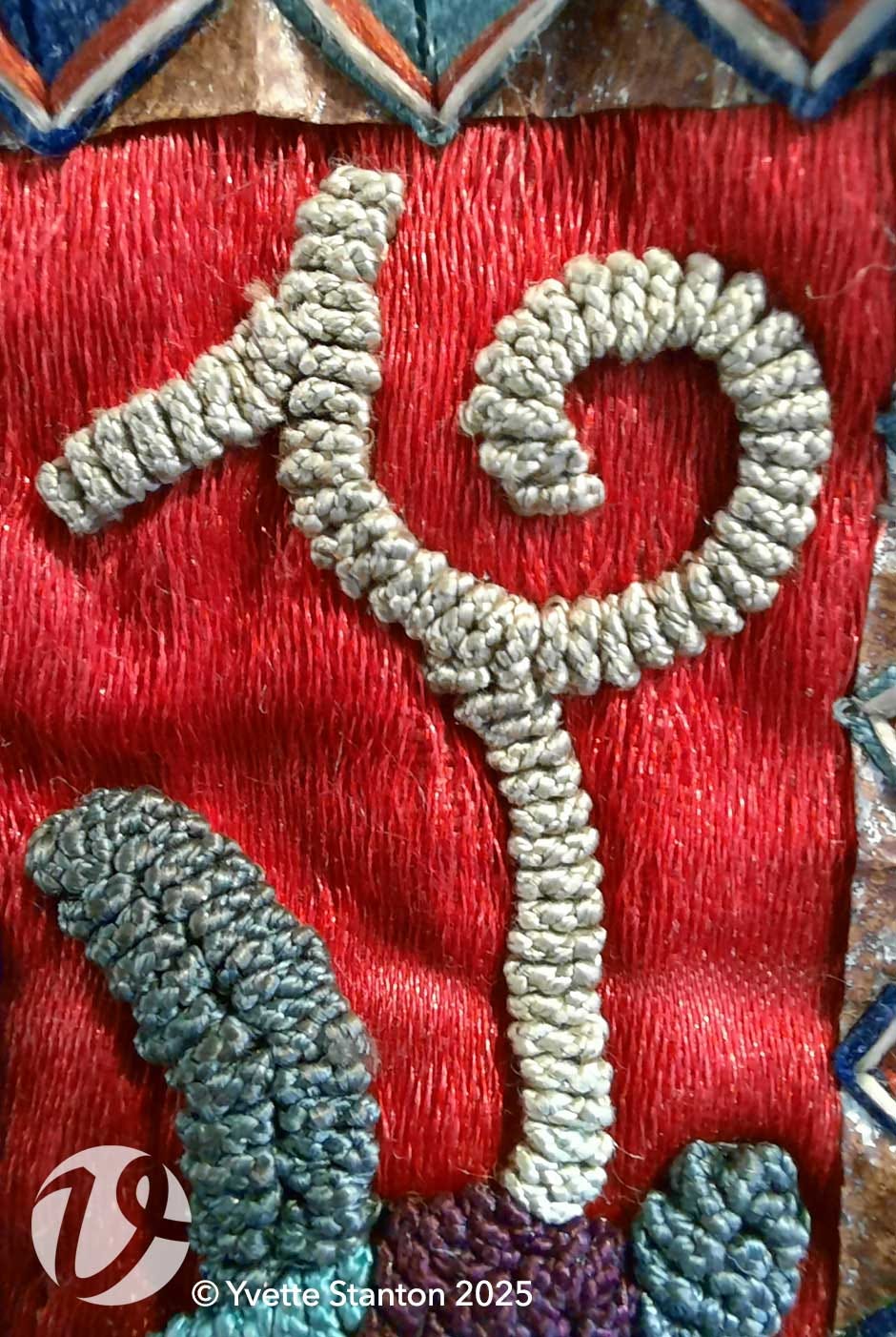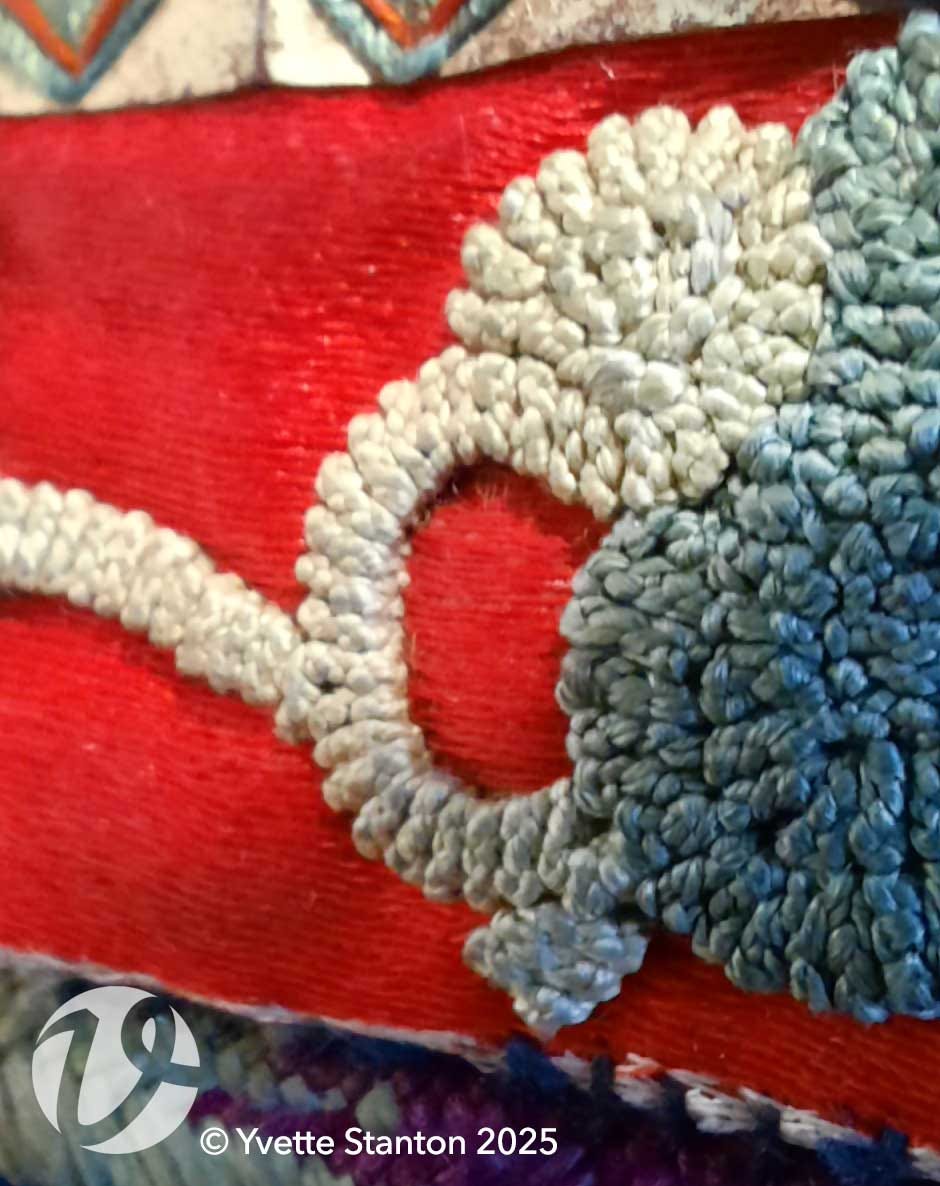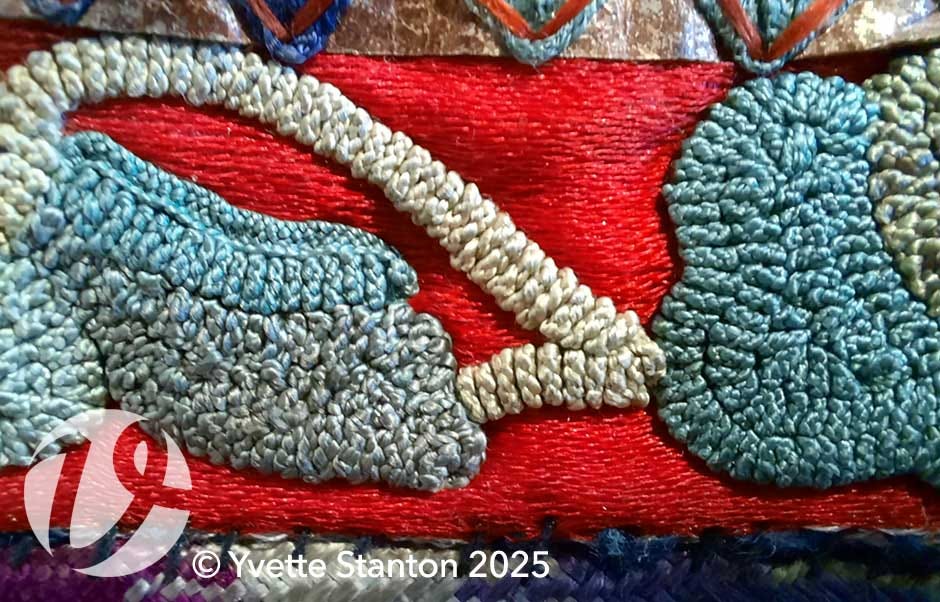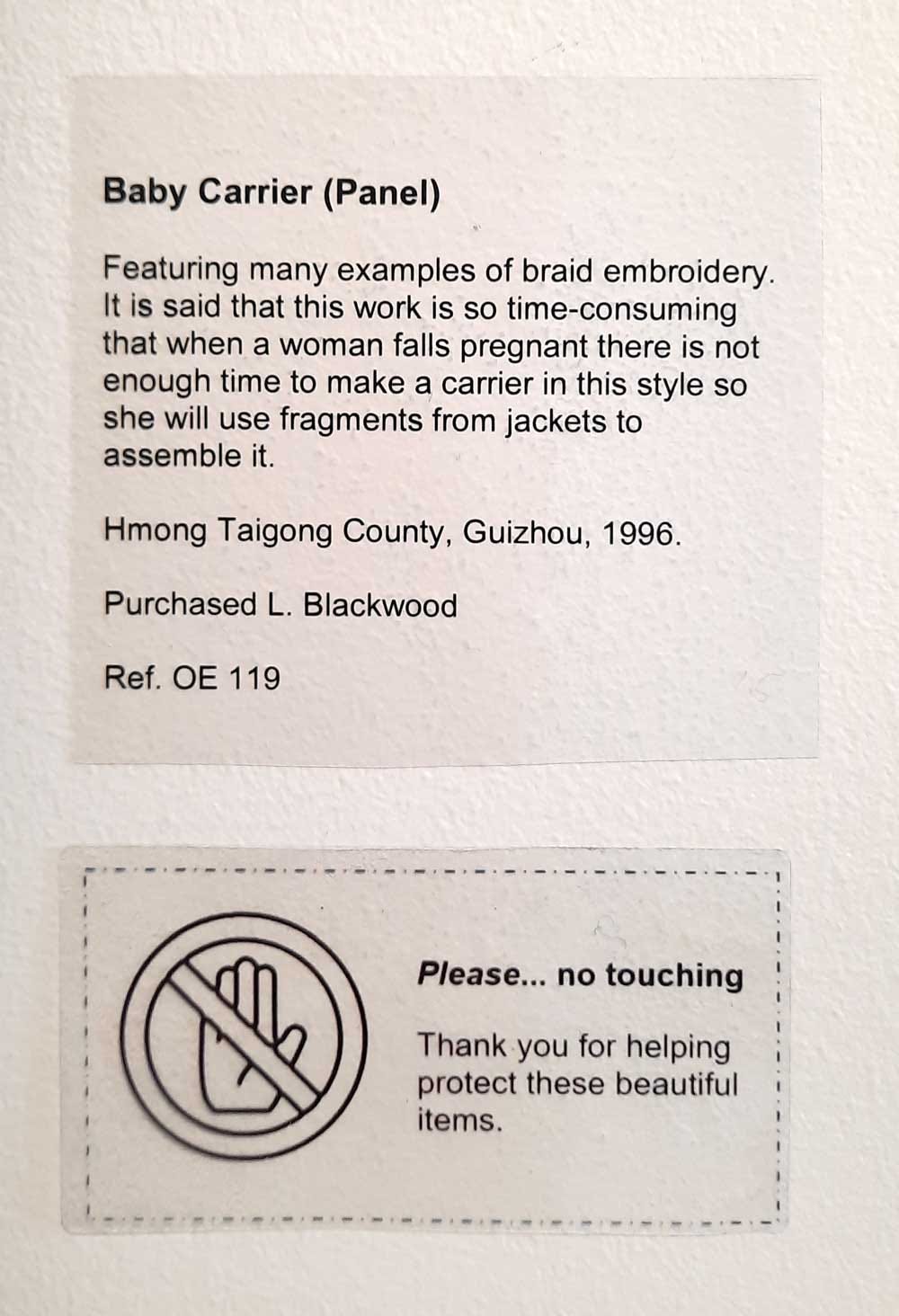Last weekend I when I visited the Embroiderers’ Guild of NSW, I had a good look at all the exhibitions. While I was upstairs looking at a display of some pieces from the guild collection, I noticed a baby carrier panel from Guizhou.
Some of the stitches immediately caught my attention because I had no idea what they were.
It looked a bit like cable plait stitch, with its knotty interwoven-ness. It was very dense. The stitches were about 3-4mm wide, so quite petite.
I stood in front of it for quite some time, racking my brain for stitches that it could be. I looked at it from directly in front. I looked at it from the side. I noticed that the stitches were sitting out from the fabric quite tall.
What on earth could it be?
And then it suddenly hit me: it wasn’t stitching at all. It was braid that was sewn on with tight, tall-standing pleats. Suddenly it all made sense!
Here we see a straight section of braid that then curves around and turns into a row of tightly pleated braid. It helps to understand how it works and what is happening.
I looked back at the description panel on the wall, and it confirmed for me that this was all about braid!
Because I was so taken with the stitching itself (I’m always looking for new-to-me stitches) it never occurred to me to take a photo of the whole piece. So if you want to see it, you’ll have to go along to the Embroiderers’ Guild of NSW at 76 Queen Street, Concord West in Sydney, before they change the exhibition!








Yvette, there is a discussion of this technique in “One Needle, One Thread: Mail (Hmong) Embroidery and Fabric Piecework from Guizhou, China” by Tomoko Torimaru. University of Hawaii Art Gallery, Honolulu, Hawaii, 2008 pp 95-97. The author calls it “couched braid embroidery”. The braids are 8-strand flat silk braids, usually made at home from flat silk purchased at local market. Jacque Carey discusses this in “Chinese Braid Embroidery” The Carey Company, 2007.
I too find it fascinating to figure out how some stitches are done. I recently visited The Museum of Northern Peoples in Hokkaido, Japan, where there are some wonderful embroidered textiles on display. I was very taken with a type of chain stitch that the Ainu people decorate their wonderful cloaks with intricate interwoven lines.